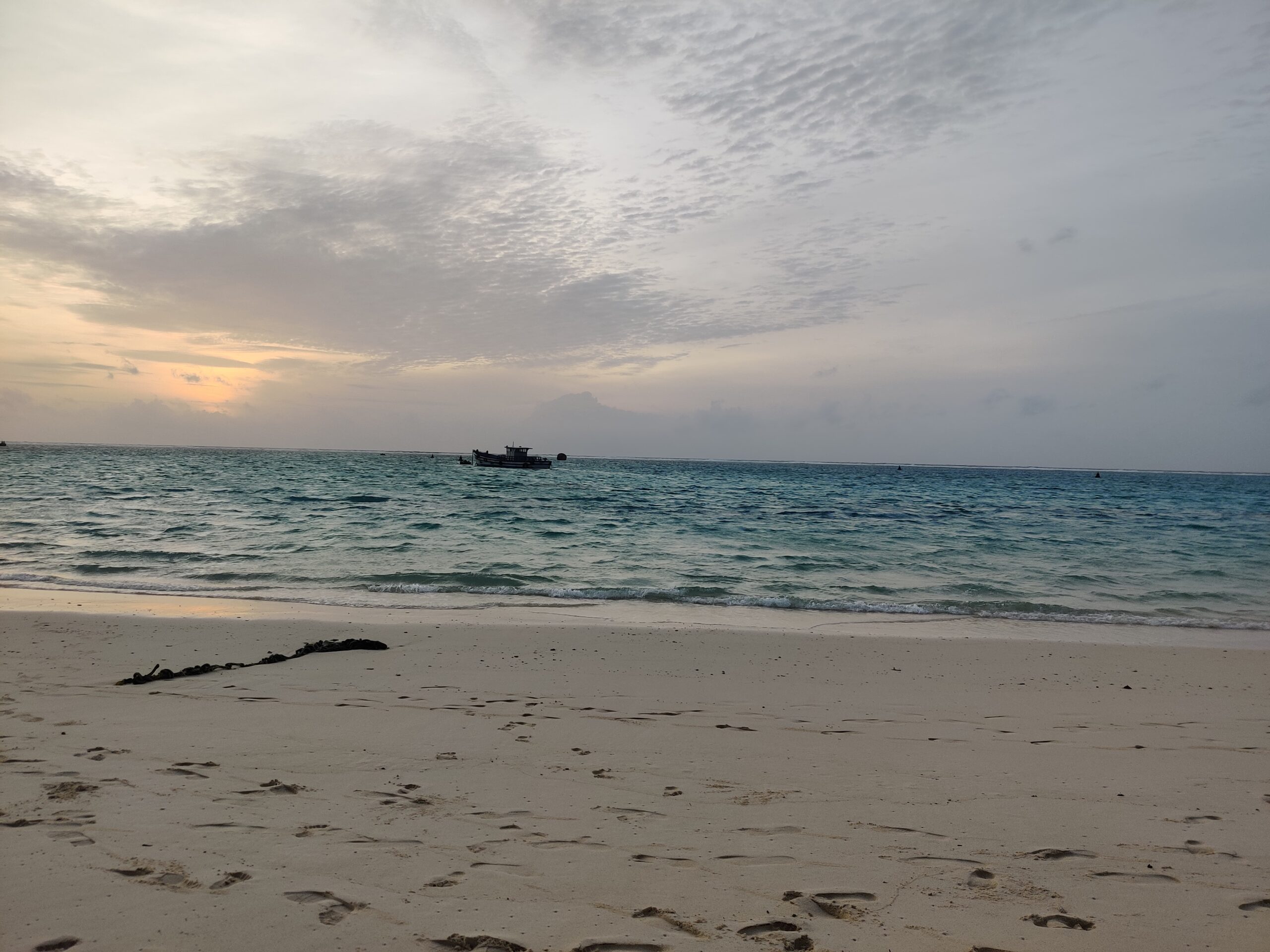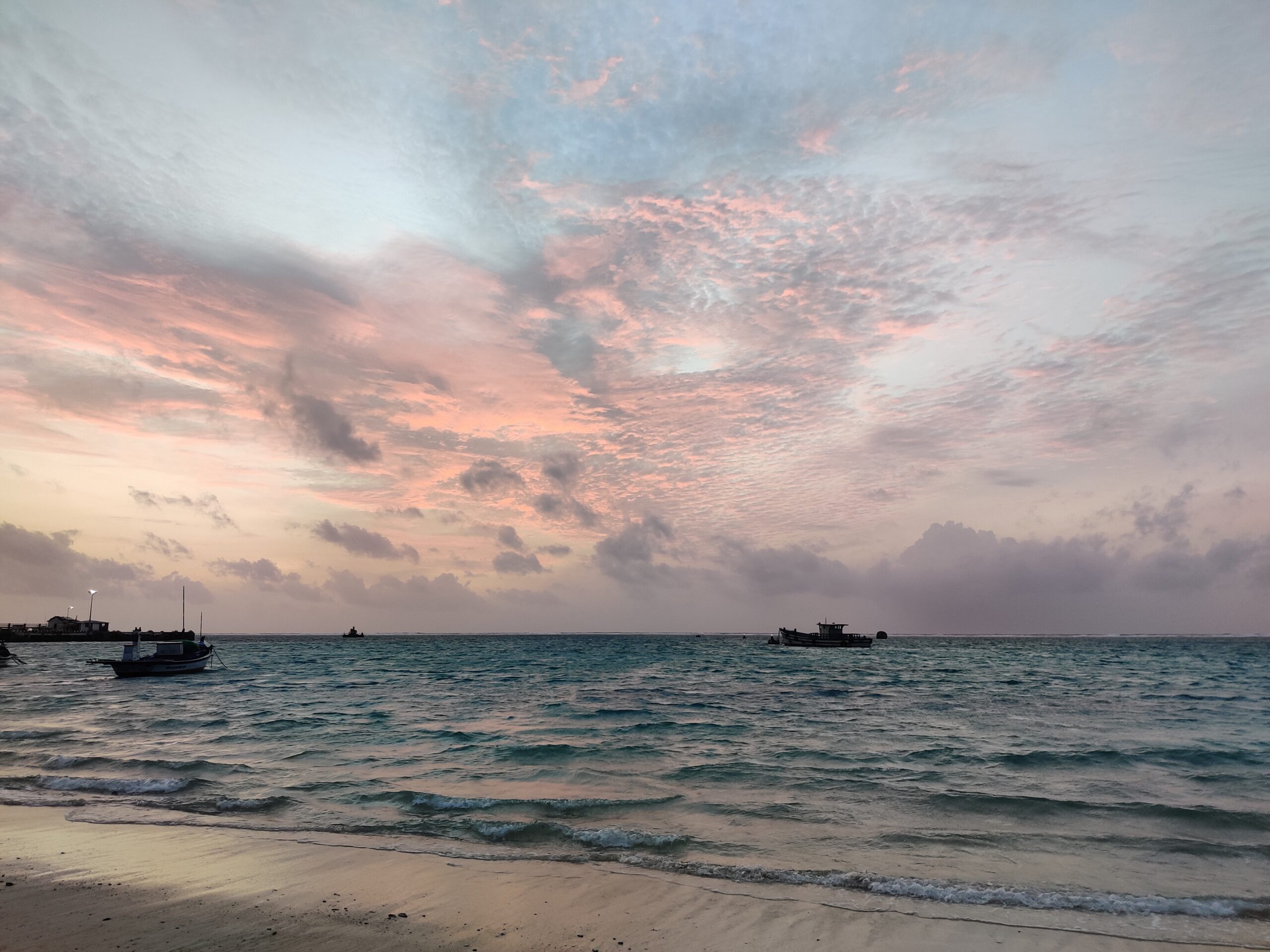Untouched Lakshadweep: Is it Ready for the Proposed Tourism Surge?
Looking at Lakshadweep’s beaches, beauty, & beyond.
Lakshadweep is an archipelago of 36 islands in the Arabian Sea, known for its exotic sun-kissed beaches, lush green landscape, and remarkable biodiversity. Literally translated, its name means “one hundred thousand islands” in Malayalam and Sanskrit. It is the smallest Union Territory of India and comprises of 12 atolls, 3 reefs, 5 submerged banks and 10 inhabited islands, spread over an area of 32 km2.
Getting There
The Union Territory can be reached by ships and airplanes from Kochi. There is a single direct Alliance Air flight (ATR) daily from Kochi to Agatti. In 2022/23, Agatti saw ~48,500 passenger movements, a 40% increase over the ~35,000 passengers seen in 2021/22. Additionally, there is a cruise line operating from Mumbai to Kochi and onward to Lakshadweep. Inter-island travel is primarily reliant on boats and helicopters. The entry to Lakshadweep is restricted to both Indians and international tourists, and a permit is required from the Lakshadweep administration to enter the Union Territory.
In January 2024, Indian Prime Minister Narendra Modi inaugurated development projects worth ~1,150 crores which includes the Kochi-Lakshadweep Islands Submarine Optical Fibre Connection (KLI – SOFC) project which aims to increase the internet speed on the islands. The Ministry of Civil Aviation has recently announced the initiation of Seaplanes to complement the existing boat and helicopter infrastructure and improve inter-island connectivity.
Discovering Lakshadweep: The Tourism Perspective
Lakshadweep is one of the most sought-after destinations in India for water sports. However, to protect the fragile ecosystems of the islands, only non-intrusive water sports are encouraged. Scuba diving, kayaking, canoeing, snorkeling, wind surfing, and water skiing are the more popular ones, and a water sports institute has also been set up by the Department of Tourism at Kadmat Island. However, despite being a popular destination for water sports, the Union Territory lacks quality accommodation with only guest houses and a few holiday homes as options. In 2021, the Government of India, in conjunction with NITI Aayog made concerted efforts to prioritize the holistic development of certain identified islands in by running a bid process. In 2023, two Taj hotels were signed on Suheli and Kadmat islands. The current central government is the first to turn focus towards the development of these islands as a tourism destination and put Lakshadweep on the map.
Lakshadweep has the potential to be developed as one of the most sustainable destinations in the country. Unlike the Maldives, which hosted nearly 2 million tourists in 2023, the archipelago cannot sustain a plethora of resorts, instead it can be positioned as an exclusive, pristine destination with fewer resorts. A delicate balance is imperative to avoid damage to the immediate environment with the construction of resorts featuring both land and water villas. The concerted development attempts of the GOI and the NITI Aayog also put an emphasis on the sustainable development of the island. To this end, the government has divided the islands into zones based on their suitability to host tourism infrastructure. Development is then planned only in the high and moderate zones.
There are multiple challenges to address on the island as it gears up to host an influx of tourists. Largely uninhabited, the infrastructure in Lakshadweep is not built for high occupancy. Some of the biggest challenges include waste management, desalination and utilities. Lakshadweep is currently reliant on diesel as its primary source of energy. There is an effort to shift to renewable energy, however, more than 50% of the installed solar power capacity is in disuse. The costs of electricity generation and supply are also high on the islands and backups are unavailable in case of a power outage. Waste management is dependent upon nine incinerators which are an unsustainable disposal system for both, biodegradable and non-biodegradable waste. Finally, healthcare infrastructure in Lakshadweep is adequate for the current population, however it is hindered by the limited inter-island connectivity. As the tourism sector develops, these concerns will need to be addressed. The development of the tourism sector itself requires vast amounts of investment. The limited connectivity and the transportation contribute to a premium on development costs compared to mainland India. Hotelivate expects that resorts in Lakshadweep are likely to cost 40-50% more than its counterparts in mainland India.
Future of the Island: Hotelivate’s Take
- High Development Costs Due to Transportation Needs: The cost of developing on this island will be significantly elevated because all construction materials, equipment, and labour must be transported over water or air. This transportation is not only more complex but also more expensive than standard land transportation, resulting in higher overall development costs.
- Resort Design Emphasizing Land and Water Villas: To maximize the appeal of the island destination, resorts should feature a blend of land and water villas. This combination allows guests to experience the unique beauty and serenity of both the island’s terrestrial and aquatic environments, enhancing the overall attractiveness of the resort.
- Sustainable and Eco-friendly Development: It is crucial to construct resorts in a way that protects the local environment, including coral reefs. Sustainable practices and eco-friendly materials should be employed to minimize environmental impact and ensure the long-term viability of the island’s natural resources.
- High Energy Costs and Alternative Energy Solutions: Since islands often rely on diesel generators for power, the cost of energy is usually high. To mitigate this, resorts can invest in alternative energy sources like solar or biomass, which are not only cost-effective in the long run but also more environmentally friendly.
- Increased Cost of Goods Due to Freight Charges: The cost of goods on the island is likely to be higher due to the added freight charges for transportation. This includes everyday supplies and operational materials, which all have to be shipped in, adding to the operational expenses of the resort.
- Transportation Investments for Guests: Developers will need to invest in transportation solutions, such as speedboats, yachts, or seaplanes, to ferry guests from Agatti to the resort. While some hotels in other island nations collaborate with local seaplane operators to reduce costs, the positioning of Lakshadweep as an ultra-high-end water destination akin to Bora Bora suggests a preference for private yachts and seaplanes, further increasing investment costs.
- Enhancing Guest Experience from the Airport: The guest experience begins at the airport, and developers should consider leasing dedicated space there to create exclusive hotel lounges. These lounges would provide a comfortable and luxurious waiting area for guests as they await their transfer by yacht or seaplane, subject to government rules and regulations. This investment in airport facilities is a key aspect of providing a high-end, seamless experience from the moment guests arrive in the region.
Lakshadweep Landscape
Source: Hotelivate
The Balancing Act
In conclusion, Lakshadweep’s potential as a luxury travel destination is akin to that of Bora Bora and Tahiti in the French Polynesia, as well as Fiji, appealing to affluent, low-volume tourists. With its natural beauty and untapped potential, it is well-positioned to become a major economic driver through tourism, similar to these renowned destinations. The focus on developing Lakshadweep’s tourism sector promises not only economic growth but also job creation and infrastructural improvements for locals. As it stands, Lakshadweep is poised to emerge as a leading global luxury destination, offering a unique blend of exclusivity and sustainable development.
For more information, please contact Sanaya Jijina at [email protected] or Harinya Sreenivas at [email protected]







